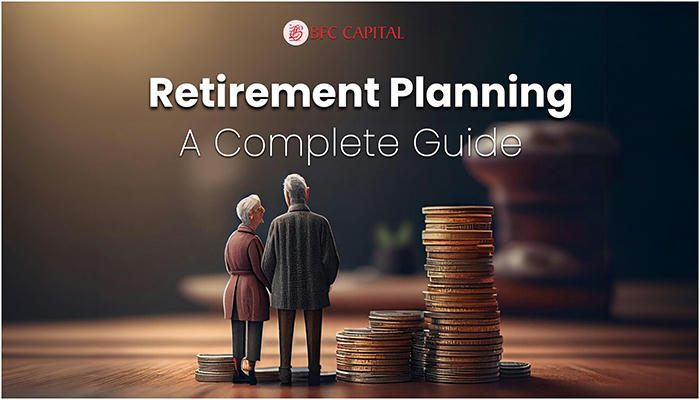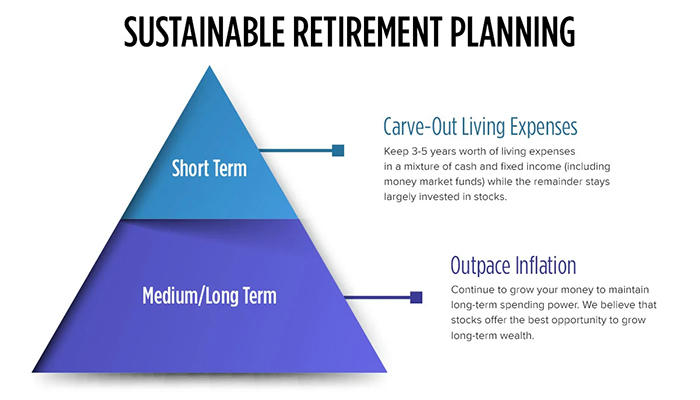The Basics of Retirement Planning: A Comprehensive Guide to Securing Your Future
Retirement planning is more than just saving money—it’s about creating a roadmap to ensure financial stability, maintain your desired lifestyle, and enjoy peace of mind during your golden years. Whether you’re just starting your career or nearing retirement, understanding the fundamentals of retirement planning is essential. This guide covers everything you need to know to build a solid retirement plan.

Why Retirement Planning Matters
Retirement planning is crucial for several reasons:
•Financial Security: Ensures you have enough savings to cover living expenses after you stop working.
•Lifestyle Maintenance: Helps you maintain your desired standard of living, whether that involves travel, hobbies, or leisure activities.
•Healthcare Costs: Prepares you for medical expenses, which often increase with age.
•Peace of Mind: Reduces anxiety about the future, allowing you to enjoy your retirement years stress-free.
Envisioning Your Ideal Retirement Lifestyle
Before diving into the numbers, take time to envision your ideal retirement. Consider the following:
•Location: Do you want to live by the beach, in a quiet small town, or a bustling city?
•Daily Activities: What hobbies or activities do you want to pursue? Gardening, traveling, cooking, or volunteering?
•Social Life: How will you stay connected with family, friends, and your community?
•Health and Fitness: What steps will you take to stay active and healthy?
•Learning and Growth: Are there new skills or interests you’d like to explore?
Having a clear vision of your retirement lifestyle will help you set realistic financial goals.
Understanding Social Security and Pensions

Social Security
•What It Is: A government-provided retirement benefit funded by payroll taxes.
•How It Works: You pay Social Security taxes during your working years and receive monthly payments after retirement.
•When to Claim: You can start receiving benefits as early as 62, but waiting until full retirement age (typically 66–67) or later increases your monthly payments.
Pensions
•What It Is: Employer-sponsored retirement income based on your years of service and salary.
•How It Works: Contributions are made during your employment, and you receive monthly payments after retiring.
•Understanding these income sources is key to estimating how much additional savings you’ll need.
Estimating Your Retirement Needs
To determine how much you need to save, follow these steps:
•Calculate Living Expenses: Estimate your annual costs for housing, food, healthcare, and other essentials.
•Account for Inflation: Factor in rising costs over time.
•Determine Retirement Duration: Plan for 20–30 years of retirement, depending on your health and family history.
•Use a Retirement Calculator: Tools like online calculators can help estimate your total savings goal.
Include Income Sources: Subtract expected Social Security, pension, or other income from your total needs to determine how much you need to save.
Setting Savings Goals and Investment Plans

Savings Goals
•Set a Target Amount: Determine how much you need to save for retirement.
•Establish a Timeline: Decide when you want to retire and how long you have to save.
Savings Plan
•Create a Budget: Allocate a portion of your income to retirement savings each month.
•Automate Savings: Set up automatic transfers to ensure consistent contributions.
Investment Plan
•Understand Risk Tolerance: Choose investments that align with your comfort level, such as stocks, bonds, or mutual funds.
•Diversify Your Portfolio: Spread investments across different asset classes to reduce risk.
•Set Clear Goals: Define your expected returns and adjust your strategy as needed.
Regular Reviews
•Track Progress: Monitor your savings and investments regularly.
•Adjust Your Plan: Make changes based on market conditions, life events, or new financial goals.
Planning for Healthcare and Insurance

Healthcare is a significant expense in retirement. Here’s how to prepare:
•Understand Medicare: Learn about the different parts (A, B, C, D) and choose the right plan for your needs.
•Consider Supplemental Insurance: Medigap policies can cover expenses not included in Medicare.
•Evaluate Long-Term Care Insurance: Decide if you need coverage for potential long-term care costs.
•Estimate Healthcare Costs: Calculate expected medical expenses and set aside funds accordingly.
•Consult a Professional: Seek advice from an insurance broker or financial advisor to optimize your coverage.
Real-Life Example: Mary’s Retirement Success
Mary, a 65-year-old retiree, meticulously planned her retirement during her working years. She envisioned living in a seaside town, traveling twice a year, and pursuing hobbies like gardening and cooking.
Using a retirement calculator, Mary estimated her financial needs and set monthly savings and investment goals. She chose a Medicare plan, purchased Medigap insurance, and evaluated long-term care coverage for added security.
Mary regularly reviews her savings and investment strategy, adjusting it based on market trends and personal circumstances. Thanks to her careful planning, she enjoys a fulfilling and financially secure retirement.
Steps to Start or Optimize Your Retirement Plan
•Set Clear Goals: Define your retirement lifestyle and financial needs.
•Assess Your Current Situation: Evaluate your savings, investments, and income sources.
•Create a Savings and Investment Plan: Develop a strategy to achieve your goals.
•Review and Adjust Regularly: Adapt your plan to life changes and market conditions.
•Seek Professional Advice: Consult a financial advisor for personalized guidance.
Conclusion
Retirement planning is a lifelong process that requires careful thought, consistent effort, and regular adjustments. By setting clear goals, understanding your income sources, and creating a robust savings and investment strategy, you can build a secure financial foundation for your retirement.
Start planning today—whether you’re in your 20s or 50s, it’s never too early or too late to take control of your financial future. With the right approach, you can enjoy a retirement that’s not only financially stable but also rich in experiences and fulfillment.
